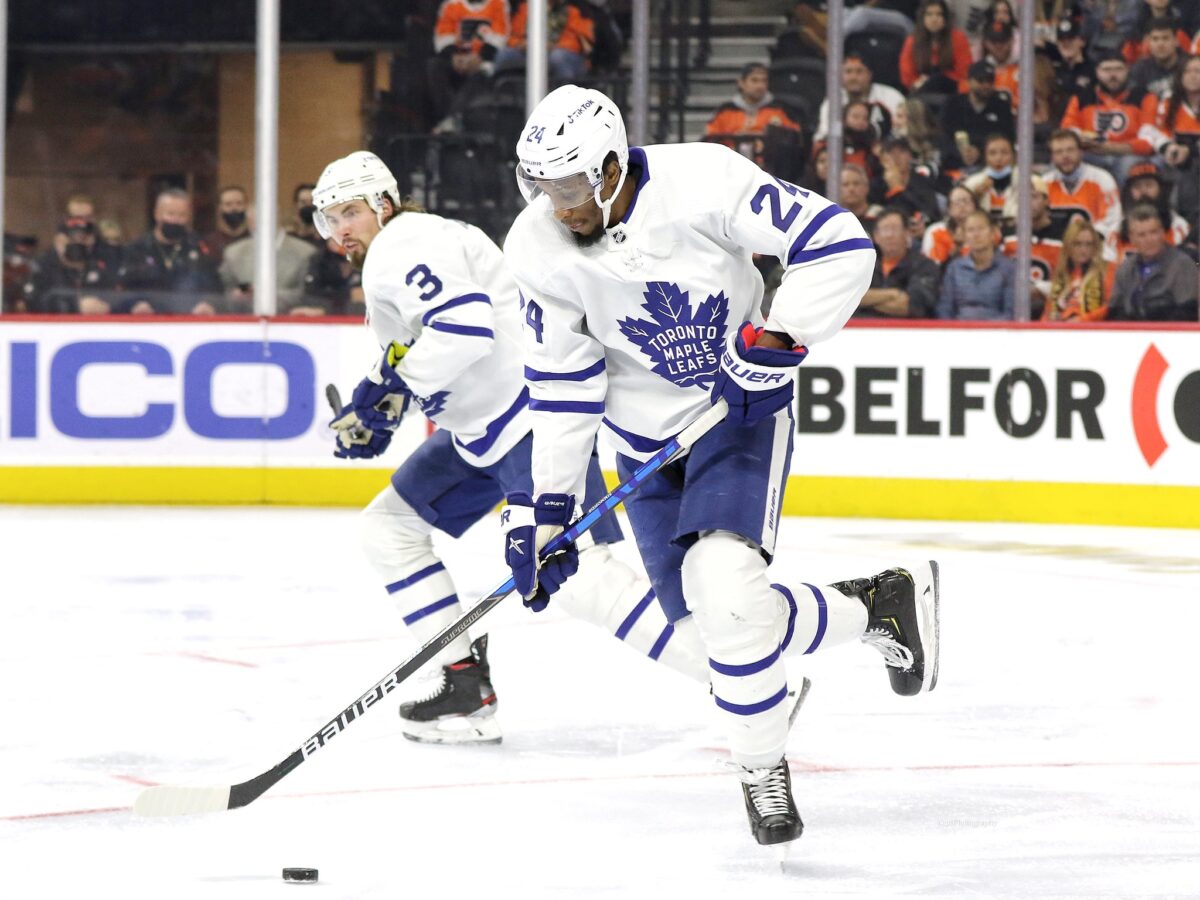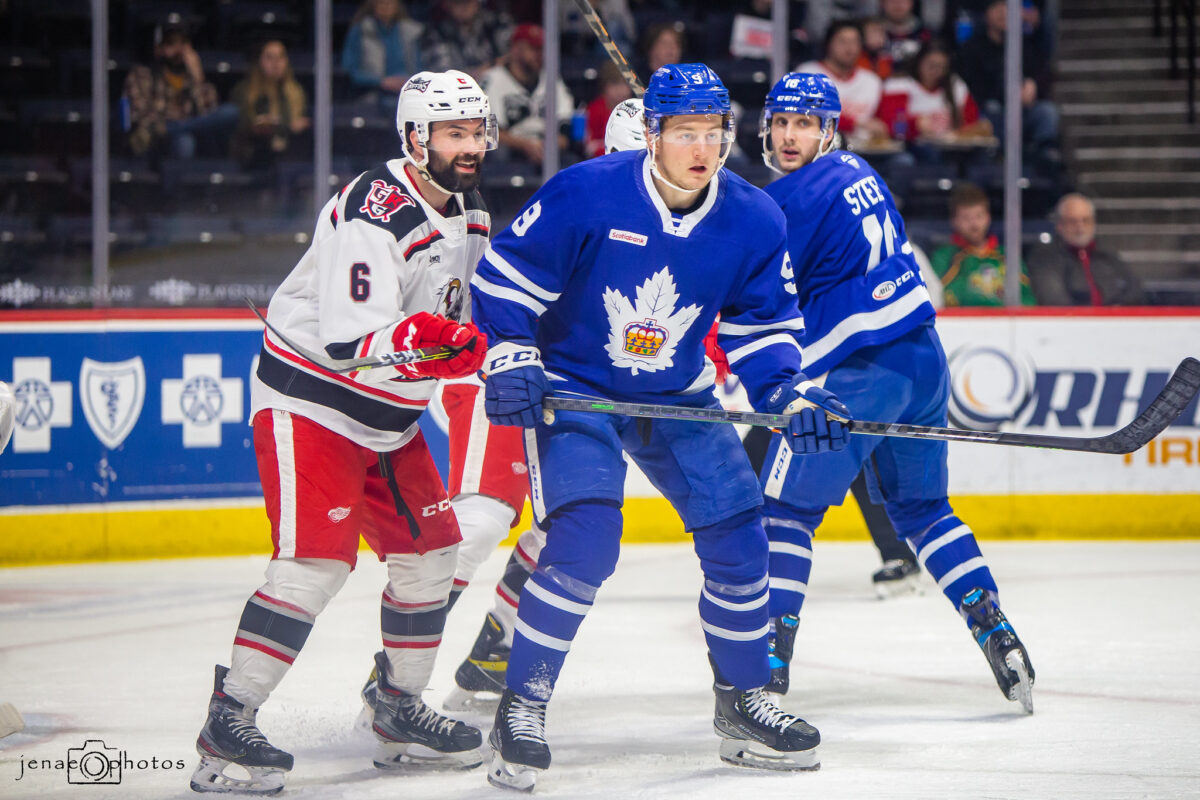When the Toronto Maple Leafs signed Ryan Reaves, that signing was met with mixed emotions and confusing expectations. While there has been a clear desire for more physicality and toughness on this Maple Leafs team, the role of a so-called enforcer in the NHL has been evolving. It isn’t like it used to be in the NHL.
In the past, Maple Leafs’ players like Matt Martin (a veteran forward known for his physical play with the Maple Leafs during the 2016-2018 seasons – he’s probably in his last NHL season and is currently playing for the New York Islanders), Wayne Simmonds (who no longer plays in the NHL), and Kyle Clifford (who is plying his craft with the American Hockey League (AHL) Toronto Marlies) have attempted to bring toughness to the Maple Leafs. However, none of them had come with Reaves’ reputation. Nor were they enlisted for the job of single-handedly transforming the team’s identity from soft to tough, which has been the case for Reaves.

Changing a team’s identity is a load of responsibility for Reaves to carry. But, he comes with more. He has the reputation of being a respected teammate in his previous organizational stops. The hope was that he could provide the kind of leadership and grit that the team needed to play with some swagger. Still, skepticism remained from many fans.
Related: Remembering Maple Leafs Tough Guy Jim Dorey
For critics of the Reaves’ signing, two logical problems seemed to exist. First, Reaves was already 36 years old and slowing down. Second, his role as a classic NHL enforcer had slowly become anachronistic in the modern NHL. In other words, Reaves was seen by some as a dinosaur. Impressive for his size and strength, but simply out of his element in 2023-24.
A Promising Start Followed by Concerns
Still, during the early games of the season, Reaves lived up to some of the expectations that had been placed on him. He engaged in fights with opponents, including a bout with Montreal Canadiens’ Arber Xhekaj in the home opener and another with Marcus Foligno in the second game of the season. These fights added an element of physicality to the Maple Leafs’ game, and they showed that Reaves was willing to stand up for his teammates.
However, as the season progressed, there was a noticeable decline in the frequency of fights involving Reaves. Instead of consistently “enforcing” (or whatever the exact job description might be written for an enforcer), his time on the ice with the team’s fourth line turned into disorganized chaos. His fourth line spent more time trying to survive defensively than even thinking about mounting any pushback. They were often overwhelmed by the offensive prowess of the other team’s lines.
Related: Toronto Maple Leafs’ Curious Signing of Ryan Reaves
In addition, although no one expected Reaves to fight every game, it was clear that the Maple Leafs needed their players to stand up for each other, both physically and mentally. Nothing about Reaves’ grit rubbed off on anyone else. The rest of the team simply was not doing that for each other. Whatever toughness Reaves carried with him stayed with him. No one else seemed to get the memo.
Reaves (or the Team) Missed an Opportunity to Respond in Boston
This entire project with Reaves went south during Thursday night’s game in Boston. In that game, Maple Leafs’ defenseman Timothy Liljegren was injured after an “incident” with Brad Marchand. Marchand, known for his dangerously combative style of play, used his stick to trip Liljegren, which led to a significant injury. Despite the blatant foul play – a can-opener, it’s called, no one on the Maple Leafs confronted Marchand.
This incident seemed a missed opportunity for the Maple Leafs to send a message to one of its most iconic opponents. Someone could have said don’t mess with my teammates. Instead, the team as a whole failed to respond, and it became evident that something was amiss with the plan.
Two Problems with the Reaves Toughness Plan
There are two problems with the Maple Leafs’ plan to bring in Reaves as an outside warrior. First, the idea shouldn’t be to trot out a gladiator just for the sake of anyone’s bloodthirst. The job is to build a team with sufficient solidarity so that its way of being (its culture) is to take care of its own. When facing strong and aggressive opponents, the entire team must respond decisively to protect teammates and send a clear message that no one in our house can be pushed around without equal pushback.
Related: Maple Leafs’ Offseason Additions Not Meeting Expectations
Second, while I have no personal critique of Reaves, I believe the task set for him was impossible to engage. Again with no disrespect to him, one of my biggest concerns with a player like Reaves is the impact he can have on the development of the younger talents within the organization.
He takes up space. The Maple Leafs have promising prospects in their system, like Bobby McMann, Alex Steeves, and Nick Robertson, who are eager to make their mark in the NHL. Certainly, a youngster with some desire and determination would jump into the fray if Reaves were not around and the culture had been created throughout the organization. [Bless him, I can even see Robertson stepping up to Marchand for Liljegren’s sake. Can you see Marchand turtling on someone his own size?]
Latest THW Headlines
Reaves’ presence on the roster, and the role he’s been given, not only limits younger players’ opportunities but also any chance the coaching staff has to assess their readiness for the NHL. He also gives the illusion of creating a quick fix for the problem of team solidarity, which should be everyone’s job. I’d prefer to see these up-and-coming players get more ice time and exposure to top-level competition rather than have a seasoned enforcer in the lineup, potentially slowing down their progress.
Related: Maple Leafs’ Keefe Says No Excuses For Inconsistent Play
Balancing the need for toughness with the need for player development is a challenge, and the Maple Leafs must build the right culture to build a contending team.
The Real Issue Is Not About Reaves’ Toughness
While I hear concerns raised about Reaves losing his edge after two games, that isn’t the issue. Even if he has a reputation as being the toughest player in the NHL, he can’t be a proxy for collective team solidarity. It isn’t toughness that’s the issue, it’s solidarity – being there for each other every single time.

This team doesn’t need Reaves to be its Goliath. It needs a group of players with slingshots who are committed to each other’s welfare. These are players who will go to battle against any opponent who treats a teammate dangerously. A few little guys with grit will do just fine for me.
They don’t even have to win; they just have to show up. If they do, they will inspire each other to join the fray in ways that an enforcer like Reaves can never do.
Reaves is a band-aid solution for a bigger problem. That’s why he’ll never be the answer for what ails this Maple Leafs team.
